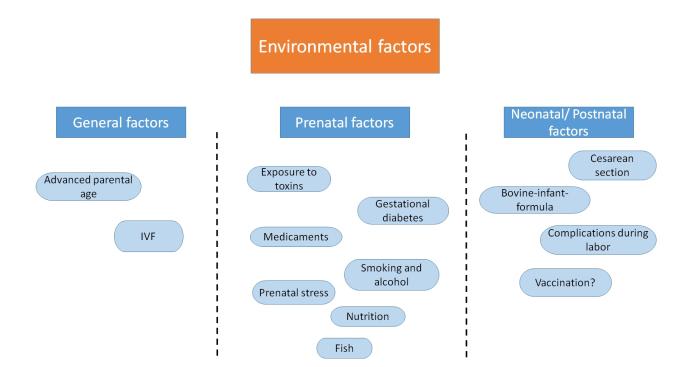Examples of environmental factors
Analysing scientific literature, a possible link between autism and a wide variety of environmental factors can be found.
General factors are an advanced parental age. Regarding the maternal age an age above 35 years was reported to lead to a 30% increase in the incidence of autism with obstetric complications as the proposed underlying mechanism. Paternal age, on the other hand, is most likely to act via de-novo mutations in the germ-line. A study investigating the rate of de-novo mutations in the paternal germline observed an 17% increase mutation rate, comparing between 33- and 28-year old individuals.
Exposure to specific toxins might depend on the field of work during pregnancy. Such toxins might be heavy metals, chemicals, air pollution and pesticides, to name a few. Exposure levels through work are in general assumed to be higher than through the general environment.
A relatively general factor with a possible relation to autism is the nutrition of the mother during pregnancy. A vegetarian diet for instance has the potential to result in a reduced intake of zinc. Zinc, however, is an essential trace element and is involvement in the detoxification of mercury.
In regard to an effect of a vegetarian diet on the serum zinc level conflicting results are reported. A study of the year 2013 was not able to report reduced levels, whereas a more recent meta-analysis found a reduced serum zinc level in vegetarians. Assuming the meta-analysis to be correct, a vegetarian diet might lead to a deficiency of zinc in the fetus. This deficiency might then cause an increased susceptibility towards mercury.
A wide varienty of other factors has the potential of porobably causing autism.

Responsible for this page:
Director of undergraduate studies Biology
Last updated:
05/30/17
